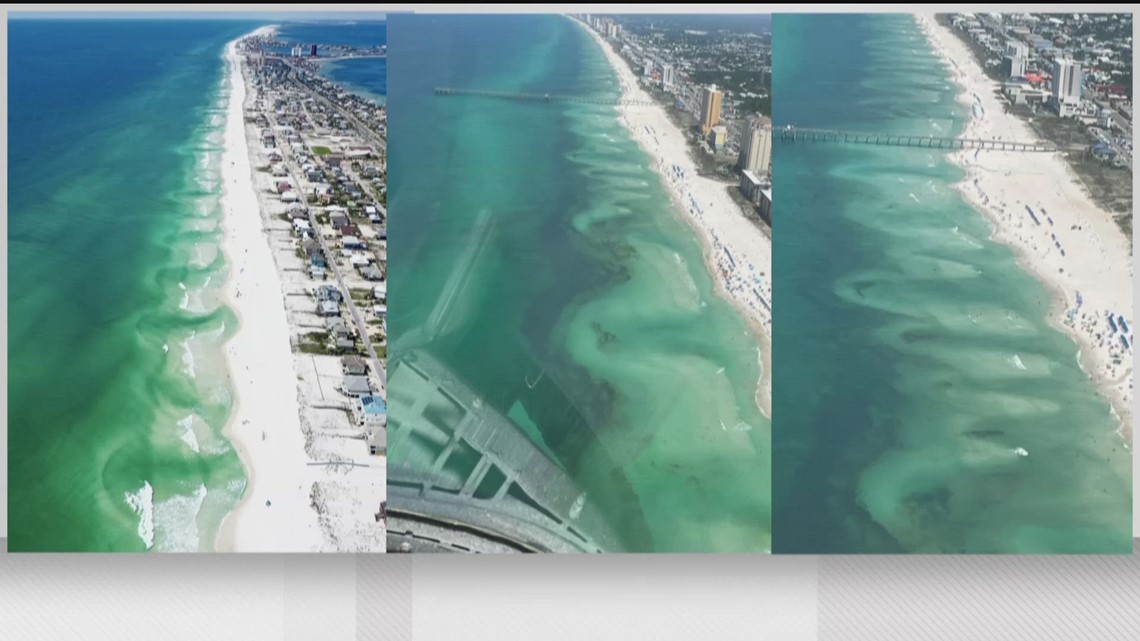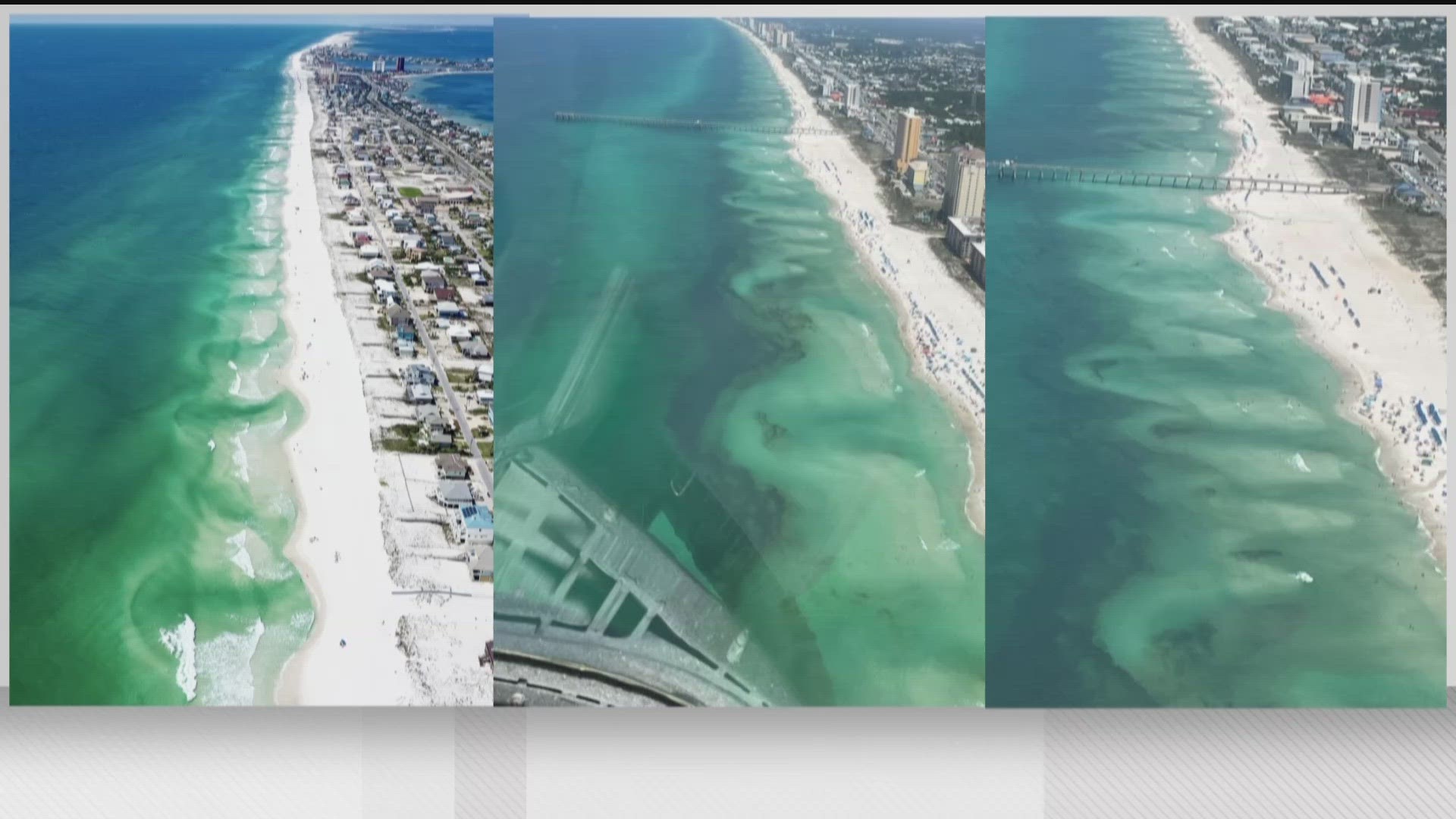ATLANTA — A word of caution– for everyone planning to spend time on the Atlantic and Gulf Coast beaches:
Deaths from rip currents in the U.S., so far this year, are on a record-setting pace.
And first responders are trying to teach a life-and-death lesson to everyone, in order to keep everyone out of trouble.
Aerial photographs of beaches along the Florida panhandle, for example, on a typical day show, vividly, one rip current after another, up and down the Gulf Coast.


Davis Wood, with Escambia County Public Safety in Pensacola, Florida, said tourists and residents, alike, need to remember that rip currents can catch anyone by surprise.
"Even on a calm day,” Wood said, "even if it's a Green Flag day, the water still has that threat of a rip current."
Wood and his teams of first responders are heartbroken with every life they can't save.
This past April, they tried to save two children and a man from the Atlanta area who were caught in a rip current– Rashad Williams, 12, Bryce Brooks, 16, and youth basketball coach Charles "Chuck" Johnson.


The only survivor in that group was Addie Jones' 14-year-old son, Braylon Jones. She was at the beach that day with her son and with his friend, Rashad Williams.
"The current came and knocked them off their feet,” Ms. Jones said. “They were just like, fighting to get back up, fighting to breathe, he said it was just so scary."
The National Weather Service reports that, so far in 2023, 55 people have drowned in rip currents, nearly all of them along the Atlantic and Gulf Coasts.
That number is on track to surpass the yearly average of 71 rip-current deaths in the U.S.
"It doesn't really matter the depth of water,” Wood said, "you can find yourself pulled out before you realize it."
First responders are working to teach swimmers that, contrary to what many believe, rip currents do not automatically pull people underwater. The first responders’ advice is just to let the rip current take you away from shore, instead of fighting the current by trying to swim into it or against it.
"If you find yourself in a rip current,” Wood said, "the biggest thing is try to float. Try to preserve your energy, because eventually that rip current ends."
And when the rip current does start to slow down, Wood said, you likely won't be too far away from shore.
"Once you realize you're not being pushed away (from shore anymore)," he said, "swim parallel to the shore and get out of that rip current, so you can get yourself in shallower water and you can walk."
As it is, rip currents, on average, take more lives each year than do hurricanes or tornadoes or lightning strikes; and yet, first responders say rip currents may be the easiest of all to survive.

